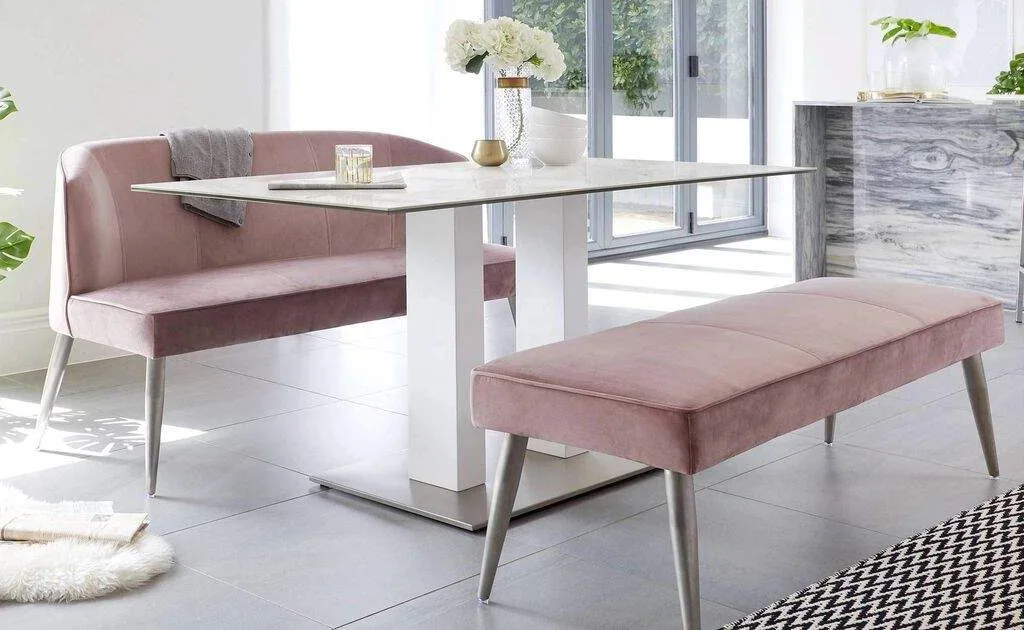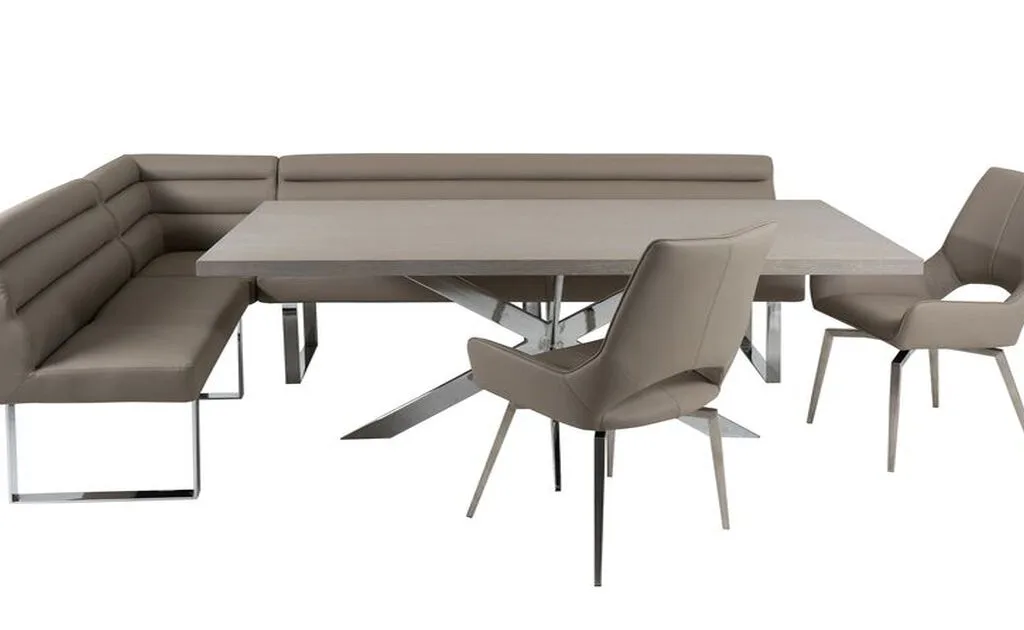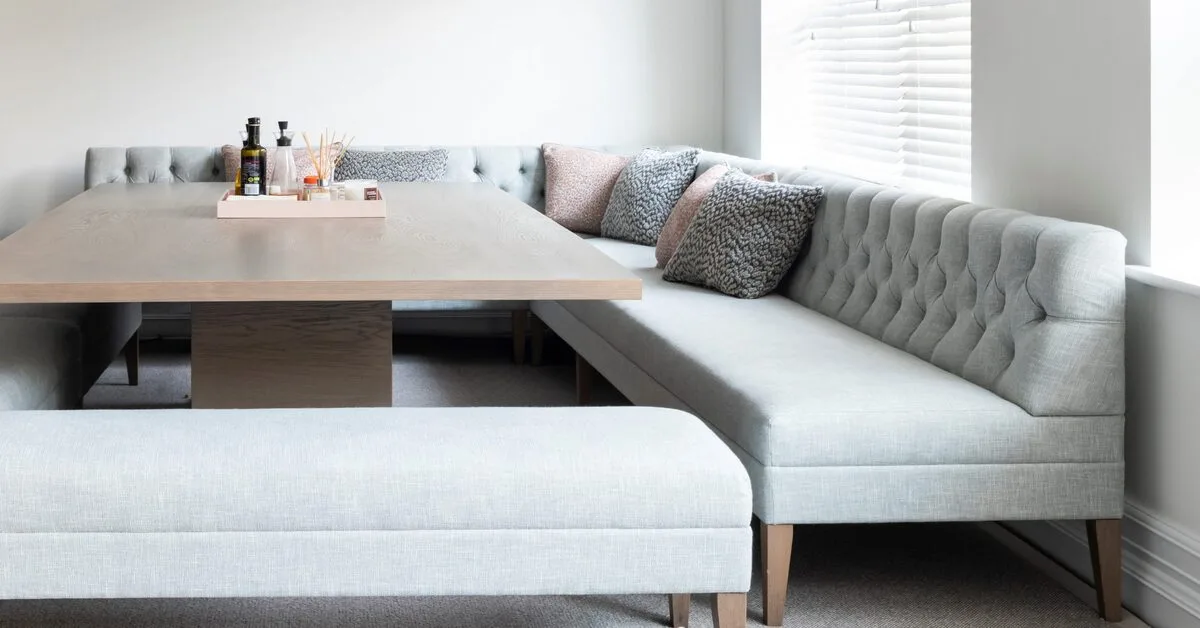In the realm of dining furniture, benches with backrests have emerged as a popular alternative to traditional chairs, offering a blend of comfort, functionality, and aesthetic appeal. As more homeowners seek versatile and space-saving options, the bench with backrest provides an innovative solution for dining setups. This comprehensive guide delves into the nuances of bench with backrest for dining table, exploring their advantages, types, factors to consider before purchasing, installation and maintenance tips, popular brands and models, customer reviews, DIY options, cost considerations, design trends, environmental impact, expert tips, and concluding insights.
Understanding Bench with Backrest
A bench with a backrest is a seating solution designed to provide support and comfort while dining. Unlike conventional chairs, these benches feature a continuous backrest that extends along the entire length, offering improved posture and relaxation. They come in various materials, styles, and configurations to suit diverse preferences and interior décors.
Advantages of Using Bench with Backrest for Dining Table
Enhanced Comfort: The ergonomic design of a bench with backrest ensures optimal lumbar support, reducing discomfort during extended dining sessions.
Space Optimization: Bench seating maximizes space efficiency, accommodating more individuals around the dining table compared to individual chairs.
Versatility: These benches can be easily repurposed for additional seating in other areas of the home, such as entryways, living rooms, or outdoor spaces.
Aesthetic Appeal: Bench with backrests add a touch of elegance and cohesion to dining spaces, enhancing the overall visual appeal of the room.

Types of Bench with Backrest
Upholstered Benches:Featuring padded seats and cushioned backrests, upholstered benches offer unparalleled comfort and a luxurious aesthetic.
Wooden Benches:Crafted from solid wood, these benches exude rustic charm and durability, making them ideal for traditional and farmhouse-style dining settings.
Metal Benches: Sleek and modern, metal benches with backrests impart an industrial flair to dining areas, complementing contemporary décor themes.
Factors to Consider Before Purchasing
Size and Dimensions: Ensure that the bench dimensions are compatible with your dining table and available space in the room.
Material Quality: Opt for high-quality materials that guarantee durability, stability, and easy maintenance.
Style and Design: Select a bench that harmonizes with the existing décor and reflects your personal style preferences.
Comfort Level: Test the bench for comfort by assessing the padding, backrest angle, and seat depth.
Weight Capacity: Check the weight capacity of the bench to ensure it can safely accommodate all users.
Budget: Set a realistic budget and explore options that offer the best value within your price range.
Installation and Maintenance Tips
Assembly: Follow the manufacturer’s instructions carefully during assembly to ensure stability and safety.
Cleaning: Regularly dust and wipe down the bench with a damp cloth to remove dirt and spills. For upholstered benches, spot clean or vacuum as needed.
Maintenance: Inspect the bench periodically for loose screws, cracks, or signs of wear, and address any issues promptly to prolong its lifespan.
Popular Brands and Models
IKEA ÄPPLARÖ Bench with Backrest:Renowned for its durability and versatility, this wooden bench from IKEA offers exceptional value for money.
West Elm Portside Outdoor Bench: Perfect for outdoor dining areas, this stylish metal bench boasts weather-resistant construction and contemporary design.
Pottery Barn Linden Upholstered Bench: Luxuriously padded and upholstered, this bench epitomizes comfort and sophistication, making it a favorite among discerning homeowners.
Customer Reviews and Feedback
Pros:
Comfortable seating
Sturdy construction
Stylish design
Easy assembly
Cons:
Limited color options
Some users experienced issues with durability
DIY Bench with Backrest
For those inclined towards DIY projects, crafting a bench with a backrest can be a rewarding endeavor. Here’s a basic guide to get you started:
Materials Needed:
Wood planks for the bench seat and backrest
Screws, nails, and woodworking tools
Upholstery foam and fabric (optional)
Assembly Steps:
Measure and cut the wood planks to the desired dimensions for the seat and backrest.
Attach the backrest to the seat using screws or nails, ensuring proper alignment and stability.
Optionally, add upholstery foam and fabric to the seat and backrest for added comfort and aesthetics.

Finishing Touches:
Sand the bench to smooth out any rough edges and surfaces.
Apply a coat of paint, stain, or sealant to enhance durability and aesthetics.
Cost Considerations
The cost of a bench with a backrest can vary significantly depending on factors such as material quality, design complexity, and brand reputation. While budget-friendly options are available starting from as low as $100, premium models with superior craftsmanship and luxury finishes can cost upwards of $500 or more.
Trends in Bench with Backrest Designs
Minimalist Design: Clean lines and understated aesthetics characterize modern bench designs, emphasizing simplicity and functionality.
Mixed Materials: Combining contrasting materials such as wood and metal or upholstery and leather adds visual interest and texture to bench designs.
Convertible Benches: Multi-functional benches that can transform into storage units or additional seating options are gaining popularity in compact living spaces.
Environmental Impact: When selecting a bench with a backrest, consider opting for sustainably sourced materials and eco-friendly manufacturing practices to minimize environmental impact. Look for certifications such as FSC (Forest Stewardship Council) or Greenguard to ensure responsible sourcing and low emissions.
Expert Tips for Choosing the Right Bench
Test Before You Buy: Whenever possible, test the bench in person to assess comfort, stability, and overall suitability for your needs.
Consider Longevity:
Invest in a high-quality bench that will withstand daily use and maintain its aesthetic appeal for years to come.
Customization Options: Explore customizing options to tailor the bench to your specific preferences, such as choosing upholstery fabric or wood finish.
Conclusion:In conclusion, a bench with a backrest offers a myriad of benefits for dining spaces, combining comfort, functionality, and style in a space-saving design. By understanding the various types, factors to consider, installation tips, and trends in bench design, homeowners can make informed decisions to enhance their dining experience.

